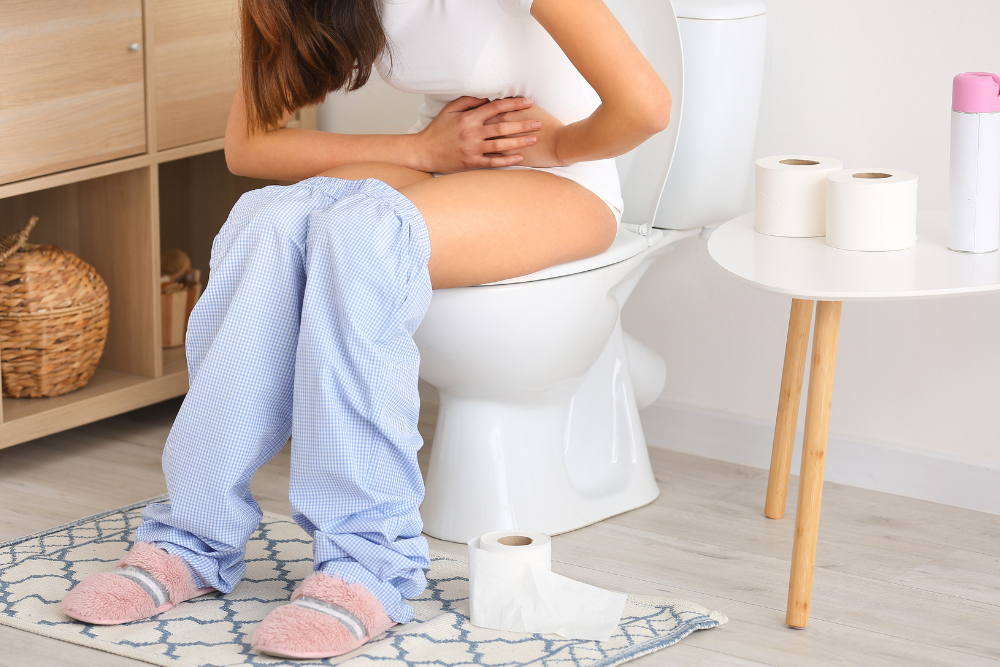Non-Sexual Urinary Tract Infections (UTIs) can be a recurring issue for many, causing discomfort and disrupting daily life. While commonly associated with sexual activity, UTIs can also affect people who are not sexually active, leading to the question: How do you get a UTI without being sexually active? Understanding the causes of non-sexual UTIs and adopting preventive measures can help reduce the risk of UTIs and further complications. So, let’s explore the common causes of UTIs, risk factors, symptoms, and effective prevention strategies.
Causes of UTIs
Urinary tract infections (UTIs) are typically caused when bacteria, which are not normally present in the urinary tract, enter and begin to multiply. Among the various types of bacteria that can lead to UTIs, Escherichia coli (E.coli), commonly found in the digestive system, is the most prevalent. E.coli can easily migrate to the urethra and adhere to the urinary system’s lining, initiating infection.¹
In addition to E.coli, other pathogens like Mycoplasma and Chlamydia can cause urethritis in both men and women. These bacteria are often transmitted during sexual activity, necessitating medical treatment for both partners to prevent recurrent infections.
Certain individuals may face a heightened risk of UTIs due to factors such as urinary obstructions or the reflux of urine from the bladder into the kidneys.
Types of Urinary Tract Infections (UTIs) include:
- Cystitis: This is an infection of the bladder and represents the most common type of lower urinary tract infection.¹
- Urethritis: This infection affects the urethra.
- Pyelonephritis: This is an infection that targets the kidneys.
- Vaginitis: While not strictly a UTI, vaginitis involves infection of the vagina and can sometimes be related to urinary tract issues.
Each type of UTI requires specific treatment tailored to its location and severity.

Risk Factors
Factors influencing urinary tract infections (UTIs) across demographics:
Women
UTIs are notably common among women, who face a higher risk compared to men due to several factors:
- Anatomical vulnerability: Women have a shorter, straighter urethra, which allows bacteria easier access to the bladder.
- Hormonal fluctuations: Changes during menstrual cycles or pregnancy can increase susceptibility to UTIs.
- Age-related changes: Postmenopausal women or those who have undergone a hysterectomy may experience thinning of urethral and bladder tissues, elevating their UTI risk.
- Pregnancy-related factors: Physiological changes during pregnancy can slow urine drainage, increasing the likelihood of UTIs which, if untreated, can lead to complications like hypertension.
- Behavioural influences: Factors such as contraceptive use (e.g., spermicide or diaphragms), new sexual partners, and constipation also contribute to increased risk.
- Medical history: Women with a history of early-onset UTIs, a family predisposition, or chronic constipation are more susceptible.
Men
Although less common than in women, men can develop UTIs, particularly when:
- Urological conditions: Issues like prostate problems (e.g., prostatitis) or bladder obstruction can hinder urine flow, fostering bacterial growth and UTI development.
- Sexually transmitted infections: Young men may acquire UTIs through sexually transmitted diseases.
Diabetes
Individuals with diabetes face heightened UTI risks due to:
- Glucose in urine: Elevated glucose levels provide an environment conducive to bacterial growth.
- Immune system implications: Diabetes can weaken immune responses, making it harder to combat infections.
Older Adults
Seniors, especially those with chronic illnesses, using certain medications, or managing incontinence or catheters, are at increased risk due to:
Health conditions
Chronic ailments and medications can compromise immune function or affect bladder control.
Catheter use
Catheterisation introduces bacteria into the urinary tract, heightening UTI risk.
Effective management and preventive strategies tailored to each demographic are crucial in mitigating UTI incidence and ensuring timely treatment.

Symptoms to Watch For
Recognising the symptoms of a non-sexual UTI is ideal for timely intervention. Look out for:
Frequent Urination
People with UTIs often experience an increased urge to urinate, even when their bladder is not full. This frequent need to urinate may be accompanied by only small amounts of urine being passed each time.¹
Pain or Burning Sensation While Urinating
A common symptom of UTIs is a burning or stinging sensation during urination, known as dysuria. This discomfort typically occurs as bacteria irritate the lining of the urethra and bladder during voiding.¹
Cloudy or Foul-Smelling Urine
Urine infected with bacteria may appear cloudy or murky in appearance. People with UTIs may notice a strong or unpleasant odour emanating from their urine, which may indicate bacterial presence.¹
Bloody Urine
The presence of blood in the urine, is another potential symptom of UTIs. Blood may appear pink, red, or brownish in colour and can be indicative of inflammation or irritation within the urinary tract.¹
Urinary Urgency
Along with frequent urination, individuals with UTIs may experience a sudden and intense urge to urinate, which may be difficult to control. This urinary urgency can disrupt daily activities and may be accompanied by anxiety or discomfort.¹
Recognising these UTI symptoms is essential for prompt diagnosis and treatment of non-sexual UTIs. If you experience any of these symptoms or suspect a urinary tract infection, it is important to consult a healthcare provider for evaluation and appropriate management.

Hygiene Practices
Practising good hygiene habits is paramount in helping to reduce your risk of non-sexual UTIs. Remember to:
Proper Genital Hygiene
Maintain good genital hygiene by washing the external genital area with mild soap and water regularly. Use gentle, unscented cleansers to avoid irritation, and always wipe from front to back after using the bathroom to prevent the spread of bacteria from the anus to the urethra.
Urinate Promptly
Avoid delaying urination when you feel the urge to void. Holding urine for prolonged periods can contribute to urinary stasis and increase the risk of bacterial growth and UTIs. Make it a habit to urinate promptly when you feel the need, and empty your bladder completely each time to flush bacteria.
Wear Breathable Undergarments
Choose underwear made from breathable, moisture-wicking fabrics such as cotton to promote airflow and prevent moisture buildup in the genital area. Avoid tight-fitting clothing and synthetic materials that trap heat and moisture, creating an ideal environment for bacterial growth.
Change Sanitary Products Frequently
During menstruation, change sanitary pads, tampons, or menstrual cups frequently to prevent bacterial buildup and reduce the risk of UTIs. Opt for unscented and hypoallergenic menstrual products to minimise irritation and maintain vaginal pH balance.
Avoid Irritating Products
Avoid harsh soaps, douches, perfumed powders, or sprays in the genital area, as these products can disrupt the natural balance of bacteria and increase the risk of urinary tract infections. Opt for gentle, fragrance-free products formulated for sensitive skin.
Practice Good Toilet Habits
Adopting good toilet habits can help minimise the risk of UTIs. Always wipe from front to back after using the bathroom to prevent bacteria from the anus from entering the urethra. Avoid excessive wiping, which can irritate the skin, and consider using moistened wipes or a bidet for gentle cleansing.

When to Seek Medical Help
Promptly seek medical attention if you experience persistent or severe symptoms, recurrent urinary tract infections, complicated urinary tract infections, symptoms worsening despite home remedies, or any signs of complications, such as fever or kidney pain.
Non-sexual UTIs can be a recurring nuisance, but with proactive measures, their frequency and severity can be significantly reduced. By understanding the causes, adopting preventive strategies, and maintaining good hygiene practices, you can take charge of your urinary tract health and enjoy a life free from the discomfort of UTIs.
Start your hub.health consultation now.
Sources
- Better Health Channel. Urinary tract infections (UTI) [Internet]. Better Health Channel. 2022. Available from: https://www.betterhealth.vic.gov.au/health/conditionsandtreatments/urinary-tract-infections-uti




